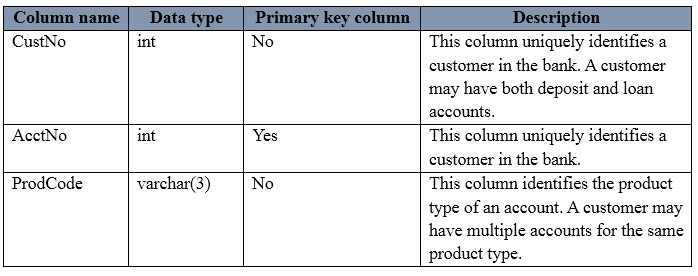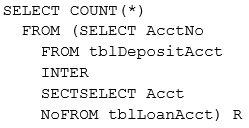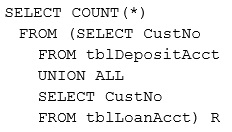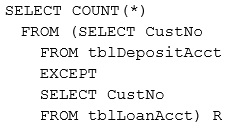

Note: This question is part of a series of questions that use the same or similar answer choices. An answer choice may be correct for more than one question in the series. Each question is independent of the other questions in this series. Information and details provided in a question apply to that question.
You have a database for a banking system. The database has two tables named tblDepositAcct and tblLoanAcct that store deposit and loan accounts, respectively. Both tables contain the following columns:
You need to run a query to find the total number of customers who have both deposit and loan accounts.
Which Transact-SQL statement should you run?
A.
B.
C.
D.
E.
F.
G.
H.
vramky
4 years, 6 months agovramky
4 years, 6 months agokimalto452
4 years, 6 months agozezima
4 years, 6 months agoKosteK
4 years, 7 months agoKosteK
4 years, 7 months agoKosteK
4 years, 7 months agoBabyBee
4 years, 7 months agoHA2020
4 years, 7 months agoHA2020
4 years, 7 months agoAghie
4 years, 10 months agoAghie
4 years, 10 months agoBacky
5 years agoAnette
5 years, 1 month agoAnette
5 years, 1 month agotz_123
5 years agoraf77
5 years, 9 months agoBartek
5 years, 9 months agoraf77
5 years, 9 months agoTazul
5 years, 9 months agojpdvm
5 years, 4 months agolh2607
4 years, 6 months agoAshfaq46
4 years, 8 months agomlourinho
5 years, 7 months agoAlsari
4 years, 6 months ago